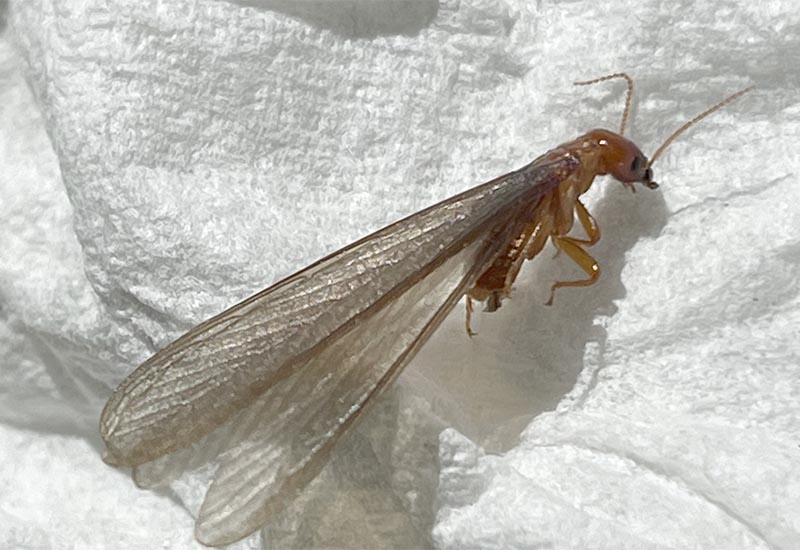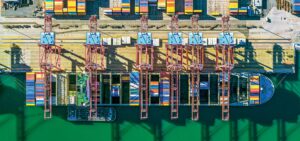
I. Introduction to Drywood Termites
A. Overview of Drywood Termites Drywood termites are a species of wood-destroying insects belonging to the family Kalotermitidae, known for infesting and damaging timber structures and furniture in homes and buildings.
B. Appearance and Behavior These termites exhibit distinctive physical features and behaviors, including swarming during specific seasons, nesting inside wood, and causing structural damage over time.
C. Distinction from Similar Insects While drywood termites share similarities with other wood-boring insects, such as subterranean termites and carpenter ants, they possess unique characteristics that differentiate them from their counterparts.
II. Identification of Drywood Termites
A. Physical Characteristics
- Body Structure: Drywood termites have elongated bodies with straight antennae and uniform width throughout their thorax and abdomen.
- Coloration and Size: They are typically pale to light brown in color and measure around ¼ to ⅜ inch in length, with soldiers often displaying larger heads and mandibles.
- Wings and Antennae: Winged reproductive adults, known as swarmers or alates, have four wings of equal length and straight antennae without bead-like segments.
B. Nesting Habits
- Colony Formation: Drywood termites establish colonies within wooden structures, infesting furniture, beams, flooring, and other wooden elements.
- Location Preferences: They prefer dry, sound wood with low moisture content, making attics, crawl spaces, and furniture susceptible to infestation.
- Damage Patterns: Infestations typically start from the inside out, with termites tunneling through wood to create galleries and chambers for nesting and reproduction.
C. Swarmers and Reproductive Cycle
- Reproductive Castes: Swarmers emerge from mature colonies to mate and establish new colonies, while soldiers defend the nest and workers maintain the colony.
- Swarming Behavior: Swarmers are attracted to light and may be observed swarming around windows, doors, or light fixtures during mating flights.
- Lifecycle Stages: After mating, swarmers shed their wings and seek out suitable nesting sites to start new colonies, repeating the reproductive cycle and perpetuating the infestation.
III. Signs of Drywood Termite Infestation
A. Wood Damage
- Surface Tunnels and Galleries: Infested wood may exhibit maze-like patterns of tunnels and galleries created by termites as they feed and travel through the wood.
- Frass and Fecal Pellets: Drywood termites produce fecal pellets, resembling tiny grains of sand or sawdust, which accumulate near entry points or exit holes.
- Structural Weakness: Severe infestations can weaken wooden structures, causing sagging floors, buckling walls, or other signs of structural damage.
B. Swarmers and Discarded Wings
- Emergence Holes: After mating, swarmers exit the nest through small exit holes, leaving behind distinctive openings in wood surfaces.
- Shed Wings: Discarded wings may be found near light sources or windowsills after swarming events, indicating the presence of an active termite colony nearby.
- Swarm Sightings: Observing swarms of winged termites indoors or outdoors, particularly during warmer months, suggests an ongoing infestation or impending colony establishment.
C. Audible Evidence
- Head-Banging Sounds: Soldiers may produce clicking or head-banging sounds as a form of communication or defense when disturbed or threatened.
- Rustling or Rattling Noises: The movement of termites within wooden structures can sometimes produce faint rustling or rattling sounds, especially in quiet environments.
- Vibrations or Clicking Sounds: Termite activity may generate vibrations or clicking sounds that can be detected with sensitive equipment or by placing an ear against infested wood surfaces.
IV. Prevention and Control Measures
A. Pre-Construction Strategies
- Wood Treatment: Apply wood preservatives or borate-based treatments to untreated lumber used in construction to deter termite infestations.
- Barrier Installation: Install physical or chemical barriers, such as metal mesh or termite-resistant materials, to prevent termites from accessing vulnerable entry points.
- Proper Ventilation: Maintain proper ventilation and moisture control in attics, crawl spaces, and basements to reduce humidity levels and discourage termite activity.
B. Post-Construction Techniques
- Inspection and Monitoring: Conduct regular inspections of wooden structures for signs of termite activity, such as mud tubes, frass, or hollow-sounding wood.
- Spot Treatment: Target localized infestations with liquid termiticides or foam treatments applied directly to affected areas to eradicate termites and prevent further damage.
- Fumigation and Heat Treatment: Consider tent fumigation or heat treatment for extensive or hard-to-reach infestations to eliminate termites throughout the entire structure.
C. Natural and Eco-Friendly Approaches
- Biological Control Agents: Introduce natural predators or parasites of termites, such as nematodes or fungi, to suppress termite populations and limit damage.
- Botanical Extracts: Apply botanical insecticides derived from plant extracts, such as neem oil or orange oil, as eco-friendly alternatives to chemical pesticides.
- Physical Barriers and Traps: Install physical barriers, like steel mesh or sand barriers, around foundations or use baiting systems with termite-attracting baits to intercept and eliminate foraging termites.
V. Conclusion
A. Understanding Drywood Termites Drywood termites pose a significant threat to wooden structures and furniture, requiring proactive measures for detection, prevention, and control to safeguard against costly damage and infestations.
B. Vigilance and Early Detection By familiarizing oneself with the signs and symptoms of drywood termite infestations and implementing preventive strategies, homeowners can mitigate the risk of termite damage and preserve the integrity of their property.
C. Proactive Measures for Long-Term Protection Whether through pre-construction treatments, post-construction inspections, or eco-friendly control methods, investing in termite prevention and management is essential for maintaining a termite-free environment and ensuring peace of mind for homeowners.


